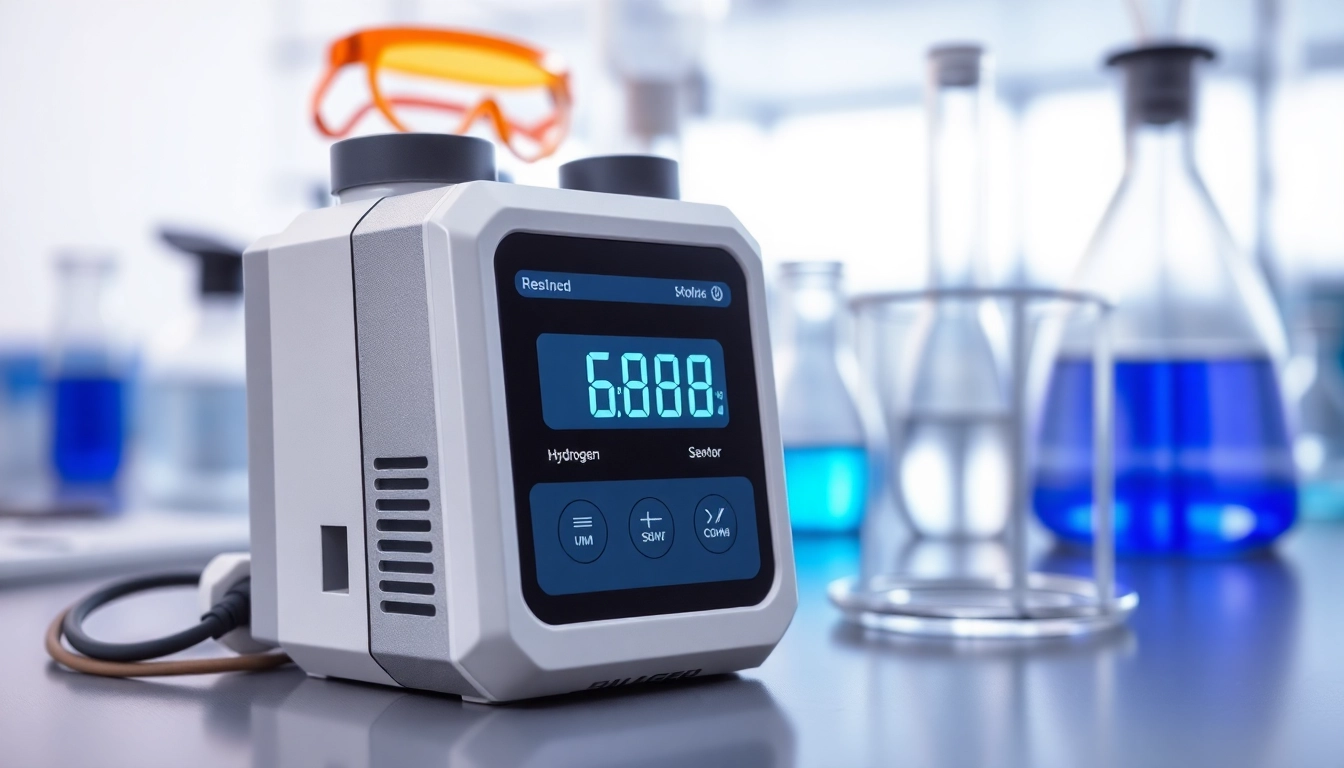1. Understanding Hydrogen Gas Detection
1.1 What Is a Hydrogen Gas Detector?
A hydrogen gas detector is an essential safety device designed to identify the presence of hydrogen gas in an environment. Hydrogen, being highly flammable and potentially explosive, necessitates reliable detection systems, particularly in industrial applications such as chemical manufacturing, oil and gas production, and fuel cell technology. These detectors typically employ a variety of sensing technologies, including catalytic, electrochemical, and thermal conductivity sensors, to monitor hydrogen levels accurately and provide early warning of hazardous situations.
1.2 Why Is Hydrogen Detection Important?
An understanding of hydrogen detection holds critical importance in various sectors. Hydrogen is colorless, odorless, and tasteless, making it challenging to detect with human senses. The potential risks associated with hydrogen leaks include fires and explosions, which can lead to catastrophic outcomes. By implementing a hydrogen gas detector, organizations can not only comply with safety regulations but also protect workers, assets, and the environment from potentially devastating incidents.
1.3 Types of Hydrogen Gas Detectors
Hydrogen gas detectors can be categorized into several types, each distinguished by their sensing technology and operational mechanisms:
- Catalytic Sensors: Utilize catalytic oxidation to detect hydrogen gas, commonly found in industrial applications.
- Electrochemical Sensors: Measure electrical currents that vary in response to hydrogen concentration, offering high sensitivity and selectivity.
- Thermal Conductivity Sensors: Detect changes in thermal conductivity when hydrogen gas is present, enabling quick response times.
- Infrared Sensors: Utilize infrared light absorption to detect hydrogen, often providing non-contact detection capabilities.
2. Key Features of Quality Hydrogen Gas Detectors
2.1 Sensitivity and Response Time
The sensitivity and response time of a hydrogen gas detector are critical factors that determine its effectiveness. High-sensitivity detectors can identify even trace amounts of hydrogen, which is essential in environments where leaks may not be immediately noticeable. Moreover, a swift response time is vital to ensure that any detected presence of gas prompts a quick safety reaction, minimizing risks before a hazardous situation develops.
2.2 Calibration and Maintenance Requirements
Regular calibration and maintenance of hydrogen gas detectors are fundamental to ensuring their accuracy and reliability. Detectors should be calibrated according to the manufacturer’s specifications, which typically involve using known gas concentrations to validate the device’s response. Maintenance routines, including battery checks, humidity assessments, and sensor inspections, are crucial for optimal performance, as ignoring these processes may lead to detection failure in critical moments.
2.3 Safety Certifications and Standards
Safety certifications and compliance with industry standards are paramount when selecting a hydrogen gas detector. Devices should adhere to international standards such as ATEX (ATmosphères EXplosibles) or UL (Underwriters Laboratories), which ensure that the detector is safe for use in explosive atmospheres. Look for detectors that display these certifications, as they indicate reliability in protecting personnel and facilities from hydrogen-related incidents.
3. Selecting the Appropriate Hydrogen Gas Detector
3.1 Assessing Your Environment
Understanding your environment is the first step in selecting the appropriate hydrogen gas detector. Factors such as the location of potential leaks, airflow patterns, temperature ranges, and humidity levels can influence the type of detector best suited for your needs. In high-risk areas, such as near storage tanks or processing equipment, more sensitive detectors might be required, while less sensitive devices could suffice in lower-risk environments.
3.2 Comparing Detector Specifications
When selecting a hydrogen gas detector, it is crucial to compare specifications across different models. Be sure to evaluate factors such as detection range, operational lifespan, battery life, and ease of installation. Additionally, consider the connectivity options available, such as whether the detector can integrate with existing safety systems or provide remote monitoring capabilities. A thorough comparison ensures that you choose a detector that aligns with your operational requirements.
3.3 Analyzing Cost vs. Benefit
Cost analysis is another essential component of selecting a hydrogen gas detector. While it may be tempting to opt for the lowest-priced model, a comprehensive assessment should consider the long-term benefits of investing in higher-quality detectors. Investing in devices with superior sensitivity, robustness, and lower maintenance costs can yield greater safety and cost-effectiveness over time, particularly in hazardous environments where the consequences of a gas leak can be significant.
4. Installation and Implementation Best Practices
4.1 Proper Placement of Hydrogen Gas Detectors
Installing hydrogen gas detectors in optimal locations is critical for effective monitoring. Detectors should be strategically positioned near potential sources of leaks, such as valves, joints, or transportation pipes, to maximize their effectiveness. Additionally, ensuring that detectors are placed at the appropriate height—considering that hydrogen is lighter than air and disperses upwards—will enhance detection accuracy.
4.2 Integration with Safety Systems
Integrating hydrogen gas detectors with existing safety systems can enhance overall safety protocol efficiency. These detectors can be linked to alarm systems and ventilation controls, automatically triggering alerts or system responses when hydrogen levels exceed safe limits. This integration allows for a proactive safety response, minimizing the risk of human error and ensuring that appropriate actions are taken swiftly.
4.3 Training Staff for Effective Use
Proper training is fundamental for maximizing the efficacy of hydrogen gas detectors. Staff should be educated on how to interpret the detector readings accurately, respond to alarms promptly, and execute emergency procedures. Regular training sessions can help reinforce safety protocols and ensure that employees are well-prepared in the event of a gas leak, contributing to a culture of safety within the workplace.
5. Monitoring and Maintaining Your Detector
5.1 Regular Calibration Procedures
Adhering to a consistent calibration schedule is essential for maintaining the accuracy of hydrogen gas detectors. It is advisable to follow the manufacturer’s recommendations—often suggesting calibration every 6 to 12 months, depending on usage and environmental conditions. Documentation of calibration processes serves as a valuable reference for compliance and reliability assurance.
5.2 Troubleshooting Common Issues
Common issues with hydrogen gas detectors may include false alarms, unresponsive systems, and inaccurate readings. Troubleshooting these challenges involves checking the sensor condition, cleaning any obstructions, and ensuring proper electrical connections. If persistent issues arise, replacement of the detector or specific components may be necessary. Organizations should maintain a clear troubleshooting protocol to address these issues quickly and effectively.
5.3 Performance Metrics and Reporting
Performance metrics for hydrogen gas detectors include detection accuracy, alarm response times, and overall equipment reliability. Regular reporting on these metrics allows organizations to evaluate the effectiveness of their safety systems and make informed decisions regarding upgrades or replacements. Documenting performance data can also assist in compliance with industry regulations and safety standards.



